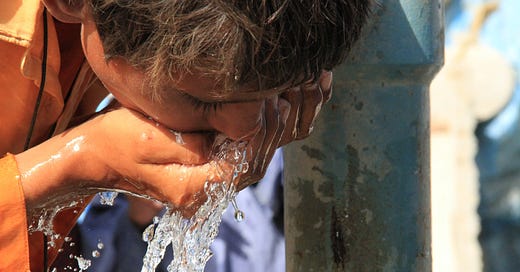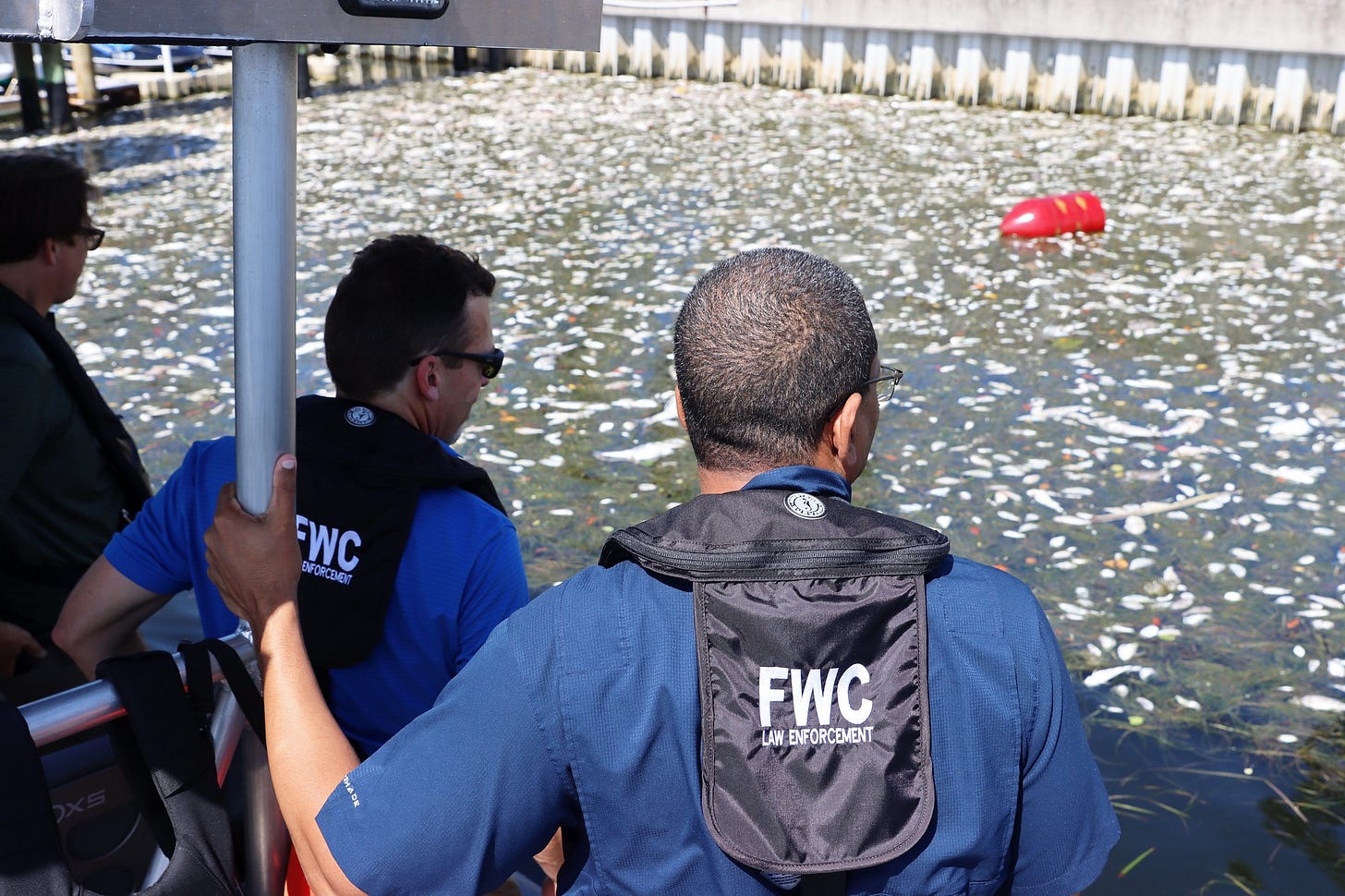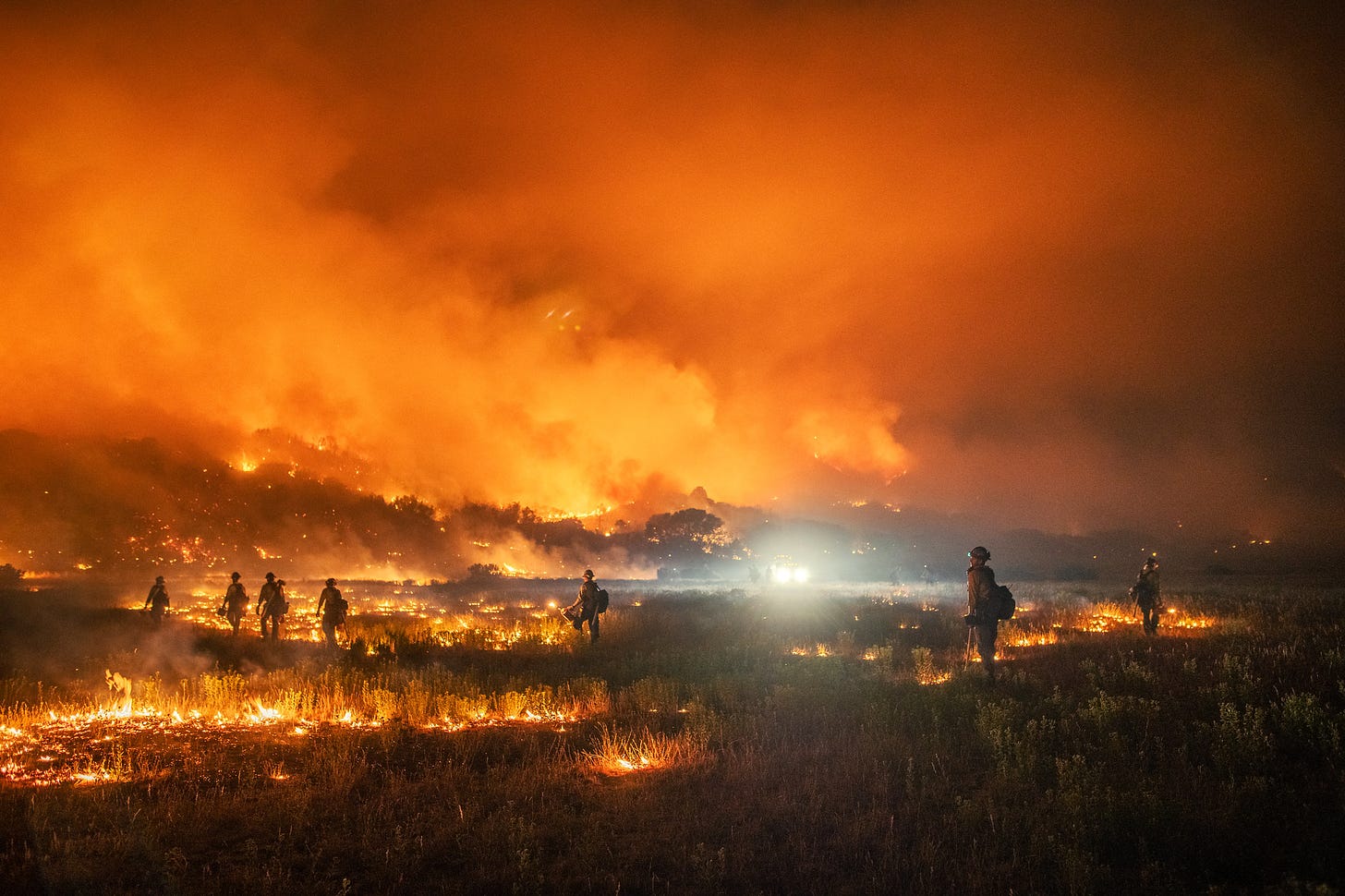The Interconnectedness of Everything & Two Autumn Tales: Something old & something new 🍂
It's all connected, we're all connected & everything is connected to human health (let me convince you!)
Dear Friend of Global Health Conversations,
I hope that this e-mail finds you happy, warm and looking forward to the week ahead. Today, I’ve chosen to focus on something old and something new (to me). Please skip to the Fortnight in Resources below for the important info. I had some busy periods this fortnight so I was gentle with myself and might have some minor omissions - but I tried to catch the most important highlights that you’d like to know: WHS, COP16 and more.
Old: The story of Cholera in London in the 1800s and how John Snow’s famous experiments revolutionised epidemiology and public health as we know it in modern, western history has always been a favourite for me. I was reminded of this story strolling through Soho past the John Snow pub recently with Loredana where I met a fellow public health enthusiast from the CDC. We identified one another easily, as we were the only ones on the street quite so enthusiastic about the famous Broad Street pump (pictured below). This week’s podcast episode is a public health bedtime story; one of science and pioneering innovation. It’s a story we know, but one that ignited something in me, and I like to listen to things.
New: The other story I have for you today is about the polycrisis in health. A term that I admit I only learned and then researched this fortnight, but a concept we all know. The polycrisis concept struck me in the sense that it reminded me of why I started writing this newsletter as a broad overview of global health and pharma: touching climate change, gender based violence, the dual burden of disease, drug development and more. These are all interconnected, and more importantly, all occurring concurrently; even as some of the largest organisations globally are going through health funding rounds. (Skip to the FiRs below to read more)
On my side, it’s been a wonderful, busy fortnight. I’ve been kind to myself because I needed it. And it’s been pretty wonderful being back in my little Geneva office, taking time to properly catch up with old friends and getting back into the (initially painful) rhythm of twice weekly pilates🧘🏾♀️. This time of year is the perfect blend of mild but sunny weather. I enjoyed a beautiful hike in the Jura mountains in France at the Hérisson Waterfalls with friends - a kaleidoscope of autumn colours on full display. Stopping at a quaint Fromagerie, I tested the limits of my lactose intolerance. Taking time to notice little things around me, and laugh inwardly. ‘Joy’ that intangible thing that we are all said to be living in pursuit of is something that I believe we can find in the little things. (And, indeed, writing a little reflective newsletter each fortnight helps to identify those moments through the process of reflection.)
The tune in my head this week was Coltrane’s Dear Old Stockholm (and this throwback, upbeat Faith Evans track, too). As far as reading goes, I’m still forming my thoughts while (very) slowly reading and digesting Mbembe’s Necropolitics. I have been trying not to think too much about things beyond my control: i.e. the upcoming US presidential election. That said, I have been grateful to see that my Project 2025 breakdown podcast episode has been doing pretty well. If you haven’t heard it, you might be interested to listen at this time.
Finally, I don’t celebrate halloween, but I do celebrate autumn. In the spirit of ‘fun Fall’ for adults; I hope that you, too, find some time to savour the season, make a nice roasted soup and appreciate the sound of crunchy, brown & orange leaves beneath your boots. That’s all from me. As always, thank you for being here.
With gratitude,
Christiana
Pharma & Global Health Headlines
Rwanda reports its 63rd Marburg virus case in a health worker while cases of children co-infected with both Mpox and Marburg rise. WHO AFRO & ACDC co-lead continental response to this crisis.
The International Pandemic Preparedness Secretariat published their day 60 progress update on developments in DTVs for Mpox. Bookmark their page to see their continued progress updates building up to date 100.
Recent study: 72% of UK public favour higher tax on unhealthy foods if the proceeds are directly used to improve affordability of healthy food
Jynneos Mpox vaccine trial in adolescents supports safety and efficacy for use in teenagers
Rift Valley Fever: Oxford vaccine enters Phase 2 in CEPI funded Clinical Trials in Kenya
1. Summary: Berlin World Health Summit 2024
The 2024 World Health Summit (WHS) in Berlin gathered global leaders, policymakers, and health professionals to tackle critical health challenges. Key discussions and outcomes focused on equitable healthcare, health innovation, and resilience in systems, with attention to the following themes:
1. Health Equity and Access: A primary theme was the need for equitable healthcare access across socio-economic contexts, reaffirming healthcare as a fundamental human right. Discussions highlighted collaborations between governments, NGOs, and the private sector to establish inclusive health policies, with a strong focus on improving access to essential services and medicines in LMICs
2. Innovation and Digital Health: There was emphasis on technological innovations like digital health tools and AI to enhance healthcare access and delivery. Key actions included increasing investment in digital health infrastructure to advance telemedicine, health data interoperability, and AI diagnostics. Support for public-private partnerships too - in the hope of speeding up research and deployment of these solutions, especially for underserved populations. I always find PPPs in health innovation interesting and a particularly useful area to collaborate across sectors - I found this interesting and encouraging.
3. Health Systems Strengthening and Resilience: Strengthening health systems to better handle crises was a central theme. Participants highlighted the need for health financing, workforce training, and robust supply chains to withstand global health emergencies. There were calls for a framework for rapid resource mobilization and knowledge-sharing in crisis scenarios which I feel aligns very well with the appropriate areas within the ongoing negotiations on the Pandemic accord as we approach INB 12. (Read my October breakdown of the Pandemic Accord here)
4. Climate and Health: Climate change’s impact on health featured prominently, with a focus on the intersection of climate and health. The summit underscored climate change as a health crisis and promoted integrated policies that address environmental determinants of health. This is an important area - key action points were outlined (they were as expected). (In July I wrote a focus piece on Climate & Health and detailed the intersections - if you’re interested, feel free to read here)
(Image: mongabay.com)
5. Pandemic Preparedness and Global Health Security: Improving pandemic preparedness was a critical area, with emphasis on international frameworks for early detection, prevention, and response. Global health security discussions called for WHO-led coordination in health emergencies and support for LMICs in pandemics.
I have been asked before, always in a fairly innocuous, non-public health setting: “Will there really be another pandemic?” My answer is always Yes and No. Yes, because there are and will be outbreaks and continued emerging threats with epidemic and pandemic potential. No, because if we, in this sector, succeed in implementing appropriate frameworks, deploying funding for pandemics, developing supply chains and manufacturing infrastructure that is both fit for purpose and warm-ready, ensuring continued investment in R&D for medical countermeasures against priority pathogens, investing in surveillance systems and generally proceeding with the attitude that nowhere is safe until everywhere is safe (among a plethora of other activities); we will not need to have another pandemic because hopefully, through all these collective efforts, outbreaks will be contained at or near the source; at or near the very start.
6. Investment in Research and Development: Investment in R&D was highlighted as essential, particularly in vaccines and therapeutics (and diagnostics too, that I sometimes feel is the ‘middle child’ of this vital trio). Participants urged for cross-sector collaboration between academia, industry, and governments.
7. Multilateralism and Global Cooperation: The summit underscored the necessity of multilateral collaboration, with a collective call for international organizations, governments, and stakeholders to unify global health efforts, acknowledging that these challenges require coordinated, cross-border responses.
All of the themes touched on adjacent/allied/non-traditional areas - financing, manufacturing, climate, AI - because all of these are vital to ensuring reliable, strong systems in healthcare. Everything is interconnected. (Read more here)
2. 2024 United Nations Biodiversity Conference - COP16 Update
This is a shorter one as the meeting is still ongoing. The 16th Conference of the Parties (COP16) to the United Nations Convention on Biological Diversity (CBD) is currently taking place in Cali, Colombia, from October 21 to November 1, 2024. The summit aims to transition commitments from the 2022 Kunming-Montreal Global Biodiversity Framework (GBF) into actionable policies. Gathering delegates from nearly 200 countries, along with Indigenous leaders, civil society and private sector.
Health and public health discussions have been central to the negotiations. The summit has highlighted the critical intersections between biodiversity and human health, especially through the proposed Global Action Plan on Biodiversity and Health. This plan seeks to integrate health considerations into biodiversity strategies through disease surveillance, health impact assessments in land use, and stricter wildlife trade regulations. However, consensus remains challenging, with ongoing debates over whether provisions for health should be mandatory or remain voluntary.
Finance has apparently been another contentious issue, with many developing nations advocating for concrete financial support to safeguard biodiversity and improve public health outcomes. Countries are also divided on certain clauses concerning the handling of antibiotic waste and the “benefit-sharing” model for genetic resources. (Read my past deep-dive on Pathogen Access and Benefit Sharing for overlaps) Developing nations are generally pushing for stronger commitments, while developed countries prefer voluntary agreements. The proposed framework would also promote “One Health” approaches, linking human, animal, and environmental well-being, a priority for regions like the European Union.
(Image: mongabay.com)
3. The Polycrisis in Health - Fortnight special :)
According to the Cambridge University press the polycrisis theory is the causal entanglement of crises in multiple global systems in ways that significantly degrade humanity's prospects.
And I really couldn’t have thought of a better way to define how the interconnectedness of everything can affect human outcomes and human health. Over the past year, there have been strong papers by academics, global health leaders and others detailing these polycrises in different arenas: Including this paper in the Lancet co-authored by WHO DG Dr Tedros Adhanom Ghebreyesus, Winnie Byanyima and others (read the full issue (no access required) or the article if you have access) focussed on advancing gender equality.
For my little summary, I have decided to highlight how all of these interconnected factors combine across health and healthcare:
So here goes. Back in 2023, I published a podcast episode entitled Cancer in Africa: The Dual Burden of Disease. In that episode, I outlined the interplay of factors faced by many African countries causing a rise in NCDs such as cardiovascular diseases and cancer to exist alongside infectious diseases. (Honestly it's one of my favourites and I like to think it’s a worthwhile listen for the dual burden concept, particularly if you like examples and storytelling)
The polycrisis concept shares some similarities in that multiple, interconnected factors converge; impacting the healthcare system and public health at large in complex, often compounding ways. Globally. This phenomenon includes environmental, social, and economic pressures that heighten vulnerabilities, particularly among disadvantaged groups, and strain resources across the health sector globally. Unlike isolated crises, polycrises involve simultaneous issues like climate change, conflicts, economic instability, and pandemics, each exacerbating the others, leading to a systemic crisis greater than the sum of its parts. And today, we are living through a polycrisis in health.
Central to the polycrisis in health concept is the interconnectedness of climate change and health impacts. Climate change-driven events like extreme heat, wildfires, and natural disasters increase direct health risks, including respiratory and cardiovascular issues, while disrupting healthcare delivery systems.
For instance, floods in Bangladesh and wildfires in Brazil not only cause immediate injuries but also long-term disruptions to healthcare, including increased infectious disease risks. Climate-related stress also indirectly affects mental health, food security, and community well-being, creating a layered, ongoing crisis in vulnerable regions.
In addition to environmental factors, the polycrisis includes socioeconomic and political elements. The COVID-19 pandemic revealed and deepened the gaps within health systems, creating long-lasting implications for both acute and chronic health needs. The strain of COVID-19 on health services not only led to missed vaccinations and routine care but also overwhelmed health systems globally, leaving them arguably more ill-prepared for future shocks than before. For example, healthcare access for noncommunicable diseases, already a significant burden globally, became even more limited, particularly in LMICs.
Another critical aspect of the polycrisis is the entangled nature of health and economic crises. The economic fallout from recent global shocks, including wars and inflation, has exacerbated healthcare financing shortfalls, with over 110 countries facing constraints that limit public health funding. Health systems already struggling to manage NCDs and infectious diseases now confront an “acute-on-chronic” crisis where chronic conditions like cancer and diabetes are increasingly unmanaged and undermanaged, raising healthcare costs and reducing overall population health.
The intersection of gender inequalities and health also reflects the polycrisis. Gender disparities and violence against women are exacerbated by polycrises, as crises like conflict and climate change disproportionately affect women and girls. In places experiencing conflict, women face heightened risks due to inadequate access to healthcare and increased exposure to violence. Even in the UK, reports of increased gender violence emerged during the pandemic, but have not reduced to pre-COVID levels, which may or may not be due to other economic or societal factors, such as the cost of living crisis. Globally, gender-responsive health policies that address these layered vulnerabilities.
To address these complexities, the polycrisis demands a systemic approach in pandemic preparedness, healthcare financing, and policy interventions. Pandemic preparedness efforts should integrate lessons learned from COVID-19 with climate resilience planning to anticipate cascading effects in future crises.
(Image: mongabay.com)
The polycrisis in health, multi-pronged and multifaceted as it is, will not be solved unless we ALL work together.
Planning must consider how infectious disease outbreaks would interact with extreme weather events to prevent breakdowns in healthcare services. Applied systems thinking, which helps visualize and manage complex interdependencies, could provide crucial insights for building more resilient health infrastructures.
This era underscores the need for renewed focus on collaborative, innovative solutions that take into account the multifaceted nature of these crises. Multidisciplinary approaches, such as those advocated by global social epidemiology, stress the importance of addressing social determinants and supporting international cooperation. By viewing the global health landscape as a network of interrelated risks, policies can be better tailored to anticipate and mitigate the cascading effects of health crises. The health polycrisis embodies a complex reality where interlinked crises in environment, economy, and society shape a global challenge that no single policy or country can resolve alone. In the face of overlapping crises, only integrated, resilient solutions can hope to safeguard public health and mitigate the long-term impacts on the global community.
(Read more: Lancet, WEF, BMJ 1, BMJ 2, GAVI, Global Policy Journal)
Behind the scenes:
Gratitude: Hiking in the Jura, back in the office, airplane view of Geneva, seeing friends, watching sunsets, Broad Street Pump & celebrating a dear friend’s birthday (latter not pictured). A lovely, insightful evening in London with my dear friend Tina (bottom right) founder of Humanitea drinks. As a lactose intolerant, I have been obsessed with her oat milk canned teas for over a year. Try them out if you’re based in the UK - they’re available on their website, Amazon, Ocado, Coop & others.
Recent Episodes: In case you missed them! 💃🏾
Episode 24: What is the Pandemic Accord, really?
This episode takes a high level overview of the Pandemic Accord, its purpose and a walkthrough of some of its most pertinent Articles. A walkthrough. The Pandemic Accord is a proposed global agreement aimed at strengthening pandemic prevention, preparedness, and response. Emerging in the aftermath of COVID-19, the accord aims to address gaps in international coordination, surveillance, and equitable access to medical countermeasures, globally.
Episode 22: Project 2025’s Impact on Healthcare, Women's Health and Regulation
In this fortnight's episode we explore and discuss Project 2025's proposed policies, which could dramatically impact health, women’s health and safety. The plan includes lifetime caps on Medicaid, reducing coverage for millions, and increased out-of-pocket costs for Medicare recipients. It threatens reproductive rights and seeks to curtail the CDC's public health role, potentially weakening responses to health crises. Basically, an anti-epidemic preparedness vision and plan.









